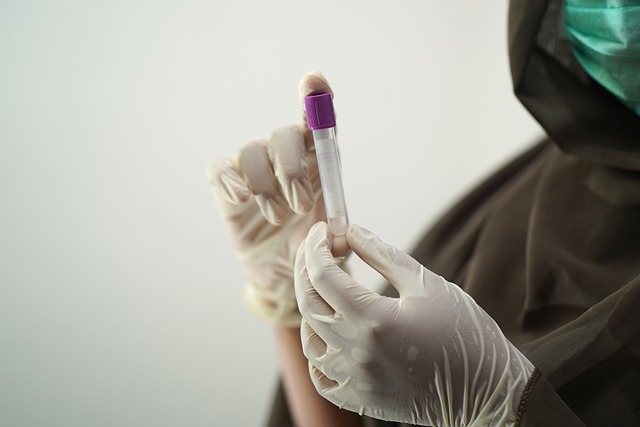Hemoglobinuria – Silent Red Flags You Need To Recognize
Hemoglobinuria can remain unnoticed for a long time, as its early signals often seem insignificant. Recognizing changes in urine, unusual fatigue, or other subtle symptoms in time can help prevent serious complications. Learn which “red flags” you should never ignore to better protect your health.

What Are the Early Warning Signs of Hemoglobinuria?
The most obvious early warning sign of hemoglobinuria is a noticeable change in urine color, ranging from pink or red to dark brown or cola-colored. This discoloration typically occurs without the presence of actual red blood cells, distinguishing it from hematuria. Additional early indicators include fatigue and weakness, which develop as the body loses hemoglobin and iron through the urine.
Other early symptoms may include back pain, particularly in the kidney area, and abdominal discomfort. Some individuals experience headaches, dizziness, or shortness of breath as their body struggles to maintain adequate oxygen transport due to hemoglobin loss. These symptoms often appear gradually and may be mistaken for other common health issues, making early recognition challenging but crucial.
Which Silent Red Flags Should You Watch For?
Several silent red flags of hemoglobinuria develop without obvious symptoms, making them particularly dangerous to overlook. Unexplained iron deficiency anemia can indicate chronic hemoglobin loss through the urine, even when urine discoloration isn’t immediately noticeable. This occurs because small amounts of hemoglobin may be lost consistently over time.
Recurring episodes of dark urine, especially during nighttime or early morning hours, represent another silent warning sign. These episodes might be dismissed as dehydration or dietary effects, but their pattern and timing can indicate paroxysmal nocturnal hemoglobinuria or other serious conditions. Additionally, increased susceptibility to infections or unusual bruising patterns may signal underlying blood disorders that cause hemoglobinuria.
How Can You Recognize Hemoglobinuria in Time?
Recognizing hemoglobinuria in time requires paying attention to subtle changes in your body and maintaining awareness of risk factors. Regular monitoring of urine color, particularly first thing in the morning, can help identify early changes. Keep track of any episodes of discolored urine, noting their frequency, duration, and any associated symptoms.
Blood tests can reveal declining hemoglobin levels, elevated lactate dehydrogenase, or decreased haptoglobin levels before obvious symptoms appear. If you have risk factors such as autoimmune conditions, certain medications, or family history of blood disorders, discuss regular screening with your healthcare provider. Early detection through laboratory tests often occurs before visual symptoms become apparent.
What Are the Hidden Signs Linked to Hemoglobinuria?
Hidden signs linked to hemoglobinuria often masquerade as other health issues, delaying proper diagnosis and treatment. Chronic fatigue that doesn’t improve with rest may indicate ongoing hemoglobin loss. Similarly, difficulty concentrating or memory problems can result from reduced oxygen transport to the brain due to anemia caused by hemoglobin loss.
Gastrointestinal symptoms, including nausea, loss of appetite, or abdominal pain, frequently accompany hemoglobinuria but are often attributed to digestive issues. Sleep disturbances, restless leg syndrome, or unusual cravings for ice or starch may also indicate iron deficiency secondary to chronic hemoglobin loss. These seemingly unrelated symptoms often form a pattern that points to hemoglobinuria when evaluated together.
What Treatment Options Are Available for Nocturnal Hemoglobinuria?
Treatment options for nocturnal hemoglobinuria vary significantly depending on the underlying cause and severity of the condition. For paroxysmal nocturnal hemoglobinuria, complement inhibitor medications such as eculizumab or ravulizumab represent the primary therapeutic approach. These medications work by blocking the complement system that destroys red blood cells, reducing hemolysis and subsequent hemoglobinuria.
Supportive treatments include iron supplementation to address deficiency, folic acid to support red blood cell production, and blood transfusions for severe anemia. In cases where infections trigger hemolytic episodes, antibiotic prophylaxis may be recommended. For severe cases that don’t respond to other treatments, bone marrow transplantation may be considered as a potential cure, though this carries significant risks and requires careful evaluation of candidacy.
| Treatment Type | Provider/Method | Estimated Cost Range |
|---|---|---|
| Complement Inhibitors | Hospital infusion centers | $400,000-$500,000 annually |
| Iron Supplementation | Local pharmacies | $10-$30 monthly |
| Regular Blood Monitoring | Laboratory services | $100-$300 per test panel |
| Blood Transfusions | Hospital blood banks | $1,000-$3,000 per unit |
| Bone Marrow Transplant | Specialized medical centers | $300,000-$800,000 total |
Prices, rates, or cost estimates mentioned in this article are based on the latest available information but may change over time. Independent research is advised before making financial decisions.
The management of nocturnal hemoglobinuria requires ongoing collaboration between patients and healthcare providers, with treatment plans adjusted based on individual response and disease progression. Regular monitoring helps ensure optimal outcomes while minimizing complications associated with chronic hemoglobin loss.
Understanding these silent red flags and early warning signs of hemoglobinuria empowers individuals to seek timely medical evaluation and potentially prevent serious complications. While the condition can be challenging to diagnose initially, awareness of these subtle indicators can lead to earlier intervention and better long-term outcomes for those affected by this complex blood disorder.
This article is for informational purposes only and should not be considered medical advice. Please consult a qualified healthcare professional for personalized guidance and treatment.




